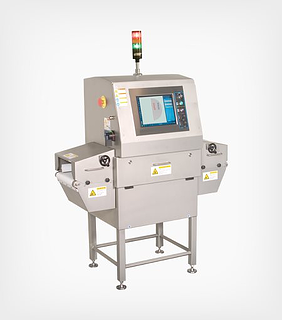 The struggle between quality and quantity in food production is as old as the practice of selling food. On the one hand, the more food you can produce, the more supply you’ll have to sell and the more money you can make. Without quantity, you won’t be able to meet demand for your products, creating an opportunity for competitors to close the gap with their own knockoff products.
The struggle between quality and quantity in food production is as old as the practice of selling food. On the one hand, the more food you can produce, the more supply you’ll have to sell and the more money you can make. Without quantity, you won’t be able to meet demand for your products, creating an opportunity for competitors to close the gap with their own knockoff products.
On the other hand, you need your products to meet certain quality standards. Not just for regulatory compliance, but to keep consumers satisfied with the product and coming back for more.
Balancing the need for quality with the need for quantity in food production is an incredible challenge for many food manufacturers. Part of this challenge is picking the right food product inspection system to help balance quality and quantity considerations.
Food and packaging inspection systems are an integral part of any modern food maker’s production process. Even here, there is a balance that has to be struck between quality and quantity.
An Argument for Quality in Food Inspection Systems
A high-quality food inspection system tends to have a very small margin of error, can detect even small contaminants in a sample of food, and can even check for things other than contaminants, such as broken seals, fill levels, missing components (i.e. caps).
Each of these features helps to ensure that only the highest-quality product possible makes it out of your factory doors and into supermarkets around the globe.
With high-quality food comes customer trust and brand loyalty, as your reputation as a supplier of high-quality food grows. This keeps demand for your products high, and minimizes the risk of a product recall.
An Argument for Fast Food Inspection Systems
There are many different kinds of inspection systems out there that can provide inspection of packaged or loose food at high speeds. The fastest systems are designed to be streamlined and smoothly integrated into your production process so as to minimize the interruption that product inspection creates.
With faster inspection, you can meet the demand for your products more easily, since there’s less of a delay for each product inspected.
For example, say that your food packaging facility can make 30 packages of food each minute, but your product inspection machine can only check 15 packages a minute because it takes 4 seconds for it to complete a check of a product package.
This effectively limits the speed of your production to the maximum operating capacity of the product inspection equipment, wasting the benefits of having high-capacity production equipment in the first place.
By using a product inspection machine that is fast, you can avoid bottlenecking your output at the QA station.
Balancing Quality and Quantity in Product Inspection
Thankfully, there are ways to have both high quality and quantity in your product inspection process so that the two goals aren’t mutually exclusive.
For example, there are many types of bulk product inspection systems that offer a high degree of thoroughness and precision in their inspection of products, such as DEXA x-ray inspection machines.
DEXA-enabled product inspection machines are frequently used in the packaged meat product industry to rapidly examine free-flow, unpacked ground meat for fat content percentage (a.k.a. chemical lean).
These machines continuously examine loose meat and create a real-time report of the actual CL value of the meat as it passes by, letting meat sellers know that their product is marked correctly. These DEXA x-ray systems can also measure moisture and protein as well. While checking for CL, moisture and protein, DEXA product inspection machines can also detect contaminants such as bones, glass shards, rocks, and other organic and inorganic dense foreign bodies in meat.
Another way to combat the issue of time spent on product inspection is to check many packaged products at once using a bulk inspection machine. Highly sensitive MDX systems such as the EagleÔ Pack 550 PRO can easily scan large bulk packages that contain many products at once. Checking multiple packages simultaneously can help make up for a slightly slower inspection cycle.
Ultimately, quality of products will almost always trump sheer quantity when it comes to protecting your brand and keeping customers loyal. However, that doesn’t mean that you have to sacrifice speed of production, if you use the right product inspection equipment.




